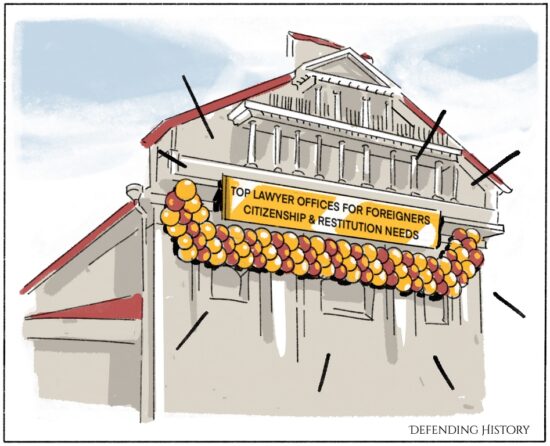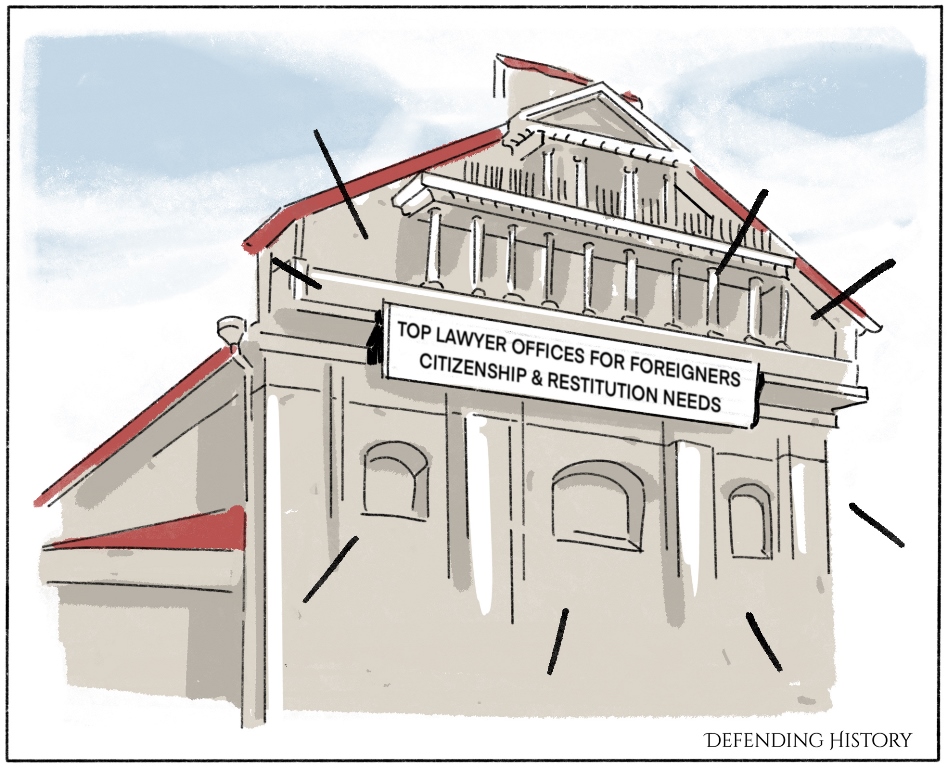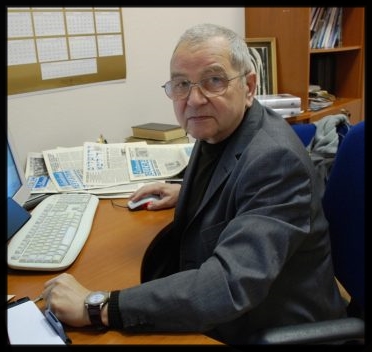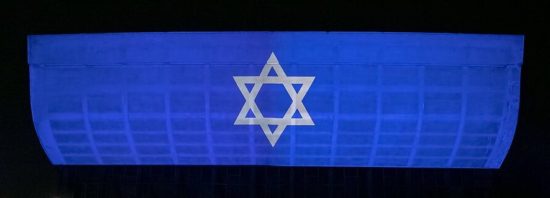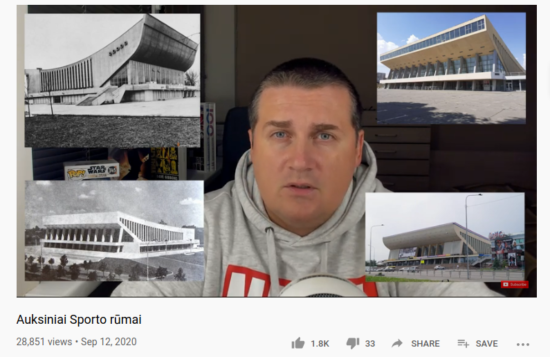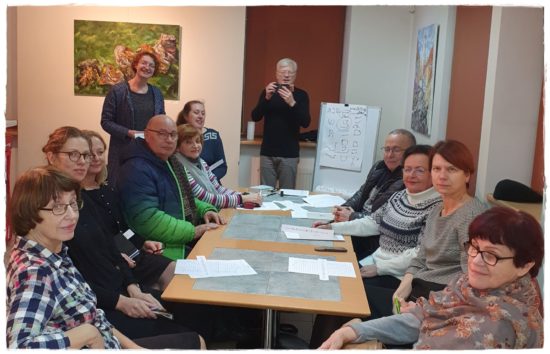2023-2024 “WORKING GROUP” ON VILNA CEMETERY | LIST OF MEMBERS | MOUNTING OPPOSITION | OLD VILNA JEWISH CEMETERY AT PIRAMÓNT | EARLIER OPPOSITION TO CONVENTION CENTER | INVOLVEMENT OF THE AMERICAN JEWISH COMMITTEE (AJC) | CONFERENCE OF EUROPEAN RABBIS (CER) | THE “CPJCE” | CEMETERIES & MASS GRAVES
◊
Rabbi Elchonon Baron speaking to Lithuanian media at today’s demonstration against plans to effectively erase the Old Vilna Jewish Cemetery via a memorial & museum complex. Video by William Adan Pahl.
◊
VILNIUS—The Vilnius Jewish Community, the democratically run Jewish community representing most of today’s Jewish citizens in Lithuania, today led a small, dignified protest at the Old Vilna Jewish Cemetery at Piramónt (in the storied Shnípishok section of Vilnius, today’s Šnipiškės in modern, elegant Vilnius), calling on the government to cancel plans for a “memorial complex cum museum” (potentially with seating for thousands — in the middle of a cemetery!) in the hated and derelict Soviet “Sports Palace.” Instead, the demonstrators made clear the monstrosity should come down and the cemetery, the most important Jewish cemetery in all the Lithuanian lands, and one of the most sacred to Litvaks worldwide, be lovingly restored.
Elected Vilnius Jewish Community (VJC) chairperson Alexander Chernov led the protest, partnering with VJC activist Arkady Kurliandchik. Others in attendance included Ruta Bloshtein, author of the international petition; Dr. Andrius Kulikauskas and Julius Norwilla (Norvila), both non-Jewish Lithuanian intellectuals who have proudly championed the rights of the Vilna cemetery for many years; Remembering Litvaks, Inc. president Philip Shapiro, and, visiting from Israel, Rabbi Elchonon Baron, currently one of the prime international leaders of opposition to desecration of the cemetery. One of the placards was Defending History’s artist visualization for the future (which DH released in Lithuanian, English, and Yiddish). However, there was no sign of any of the government-appointed members of the latest posh “Working Group” to be assembled, in effect, to permanently destroy the cemetery via rubberstamping of a memorial complex where thousands would assemble for events in its very heart.
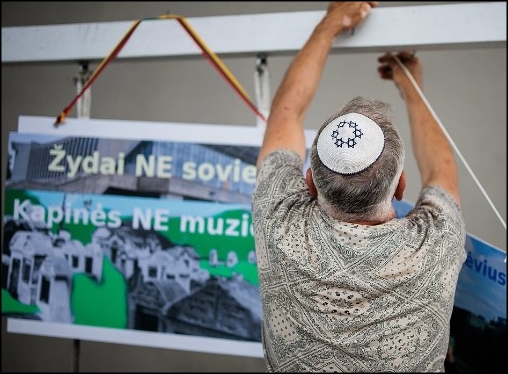
“Jews are NOT Soviets! A Cemetery is NOT a Museum!” One of the demonstrators’ placards goes right to the quick: Plonking a “Jewish memorial/museum” in an iconic Soviet monstrosity would forever cement the East European antisemitic canard of Judeo-Bolshevism. Moreover, a cemetery is a cemetery, not a museum, and desecrating it would never occur to officials if it were a sacred 500 year old burial ground of the majority population and religion. Equal rights, man!
The event attracted mainstream Lithuanian media coverage, including LRT’s Evening News (from 23:28). The following images are from LRT’s report today (please scroll down for their photo gallery which includes many more photos). See the report for quotes from participants and further details. See now the photo (& video) gallery by William Adan Pahl.
